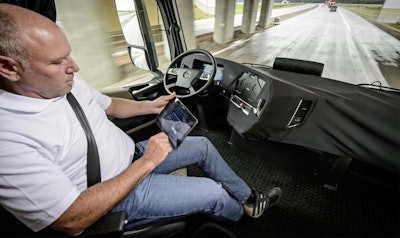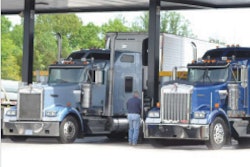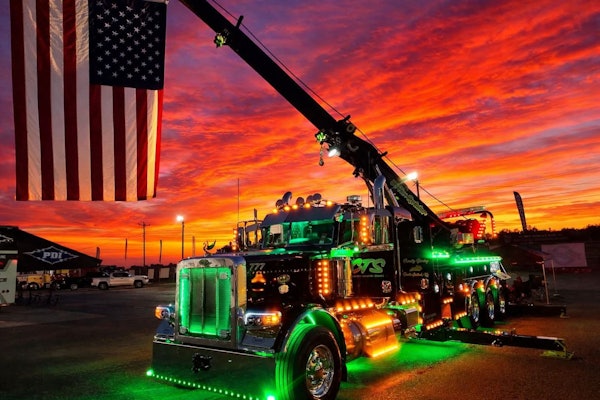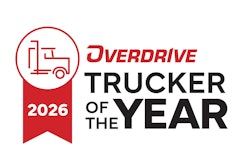A truck technology panel stressed driver assistance over autonomous driving during a seminar at the Mid-American Trucking Show Friday in Louisville, Kentucky.
“The driver is going to be in that vehicle for many, many decades,” said moderator Selika Gore, a senior advisor with the Federal Motor Carrier Safety Administration.
 Panelists and audience members agreed that even with semi-autonomous safety technology working properly in a truck, the driver needs to stay vigilant.
Panelists and audience members agreed that even with semi-autonomous safety technology working properly in a truck, the driver needs to stay vigilant.She said the agency is striving to get input from drivers and others in the industry to ensure that driver-assist technologies work safely and that no regulations needlessly impede research and deployment of trucking tech. “Encouraging innovation is one of the secretary’s cornerstones,” she said of Department of Transportation Secretary Elaine Chao.
FMCSA’s intent has taken shape with its proposed “Federal Motor Carrier Safety Regulations which may be Barrier to Safe Testing and Deployment of Automated Driving Systems-Equipped Commercial Motor Vehicles on Public Roads.” It’s been filed with the office of Management and Budget to move to an advanced notification of proposed rulemaking.
As an example of how the agency has addressed problematic regulations to help pave the way for new technology, panelist Larry Minor of FMCSA cited a regulation that prohibited blocking windshield views. That created a problem with the cameras needed for lane-departure warning systems, so the regulation was changed. A similar development is ongoing with replacing side-view mirrors with cameras that feed views to a dashboard screen.

Panelist Don Logan, a former America’s Road Team captain who drives for FedEx Freight, said he “was not a fan of lane departure” technology because it sounded alarms too frequently. But when he moved from a 2014 model truck to a 2019 model, he realized how much the technology had improved, being much less intrusive. “I am for all the safety assistance they can put on there if it’s going to make us safer,” he said.
Some safety technology, such as electronic braking, steering assist and advanced cruise control has “so far been in the realm of Tesla, Audis, Cadillacs, Mercedes-Benz,” said panelist Ognen Stojanovski of Pronto AI, which makes the Copilot driver assistance system for trucks. Cameras can see more, and reaction times are quicker. Now that collision mitigation technology has improved so much, trucking needs to play “catch-up” with luxury automobiles, he said.
At the same time, the best technology “doesn’t have the instincts you all have,” Stojanovski told the audience of mostly drivers. Pronto and other companies intend to give drivers the “super-powers” of the best technology to assist them as they remain vigilant behind the wheel, but not to overly relax them or eventually replace them. A young person going into driving today “can be a truck driver as long as they want,” he said.
That assistance “really will make your life better,” said Robert Brown, director of public affairs for TuSimple, which is testing 11 semi-autonomous trucks while they make commercial deliveries. With the company’s camera-based system, the truck “can see up to 1,000 meters ahead and 300 meters behind” and almost 360 degrees.
During a question and answer period, a woman asked why the collision mitigation system she drives with so frequently executes hard braking when there is no object to merit it, what she called “shadow braking.” Stojanovski said there have been too many “false positives” in such truck systems, which is one reason the technology hasn’t been adopted much in passenger vehicles.
Responding to a question, Minor said he does not envision platooning reaching a point where the trucks following a lead truck will be totally driverless.
One questioner related a story of a trucker who had depended on a collision mitigation warning, failed to receive it, and then hit a car.
“You can’t get complacent and rely on that technology,” responded Logan. “It’s there just to assist drivers and we’ve got to remember we are in control.”










